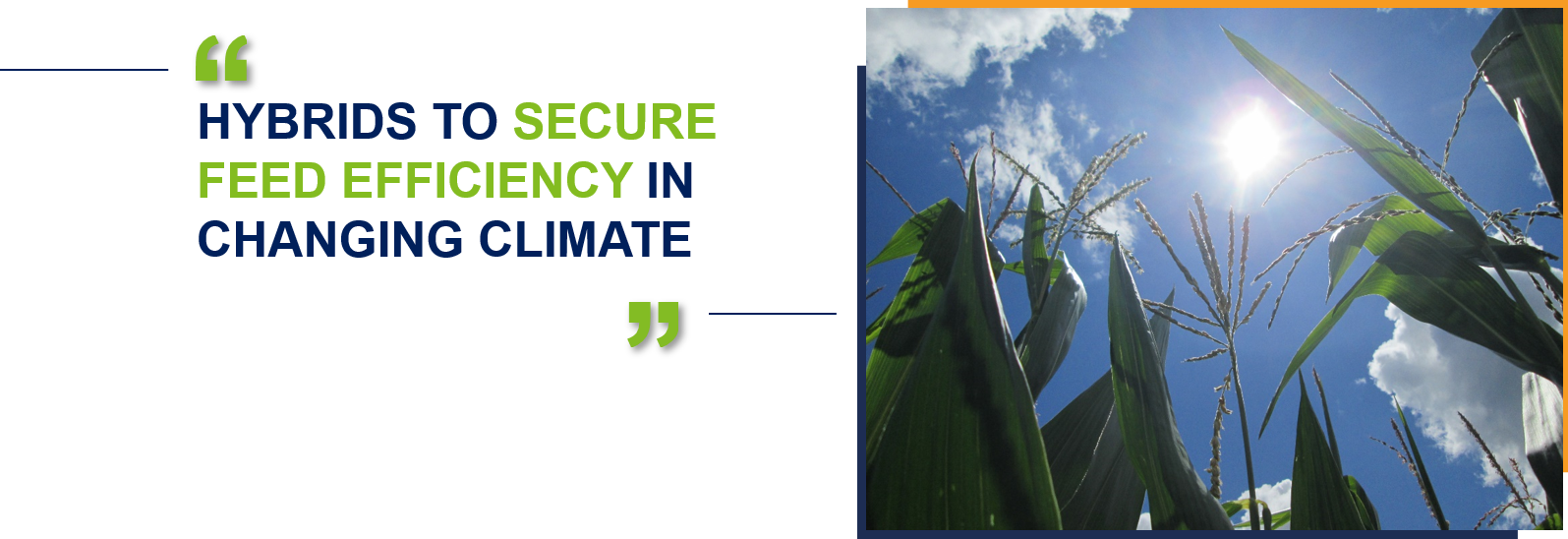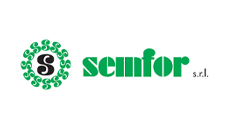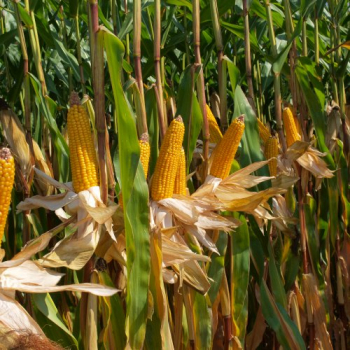Use GREEN+ hybrids to optimize your silage maize harvest
60% of farmers do not harvest their silage maize at the right date, either because of hot and dry weather conditions in August- September or because of difficulties to forecast it.

How do GREEN+ varieties respond to dairy farmers' challenges in production and conservation of silage maize?
MAS Seeds teams have analysed more than 500 maize silos for two years in 10 European countries. These diagnoses have highlighted 3 major challenges that farmers face in producing and conserving of silage maize: to harvest at the good maturity in a context of global warming, to keep the quantity and the quality of fodder in the silo, and value the starch in the rumen. Based on this observation, MAS Seeds R&D teams have specifically developed the GREEN+ silage maize portfolio.
Read more about GREEN+ varieties in our Agro Library
Challenge 1: Harvest silage maize at correct maturity
WHAT WAS OBSERVED DURING THE SILO DIAGNOSTICS ?
- Harvesting between 32 and 35% of dry matter is the good compromise between yield, feed value and quality of conservation.
- An early harvest limits the yield and the energy value of forage.
- A late harvest enables a gain in DM yield / ha but also a change in the chemical composition of maize: the level of starch increases but at the same time the soluble sugars, the digestibility of the fibers and the level of protein decreases. In addition, silo compaction and storage become more difficult because the forage is drier.
- The silo diagnostics carried out by MAS Seeds teams in 2017 and 2018 show that only 40% of farmers succeed in harvesting between 32 and 35% of dry matter
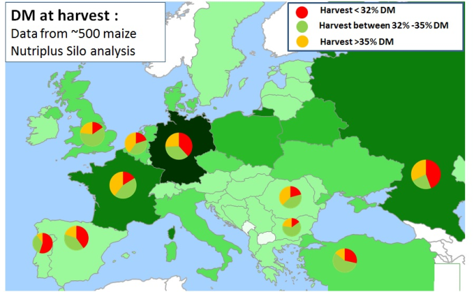
Source: MAS Seeds. Average of 510 silo diagnosis made on farm by MAS Seeds teams in 2017 and 2018
HOW DO GREEN+ VARIETIES RESPOND TO THIS CHALLENGE?
- GREEN+ hybrids are selected on stay-green. Stay-green is the genetic ability of a hybrid to behave well in hot and dry conditions and to stay green until the harvest stage.
- A slower evolution of dry matter makes it possible to extend the harvest window by 5 to 10 days depending on weather conditions.
- GREEN+ hybrids give farmers MORE TIME FLEXIBILITY FOR HARVESTING SILAGE MAIZE.
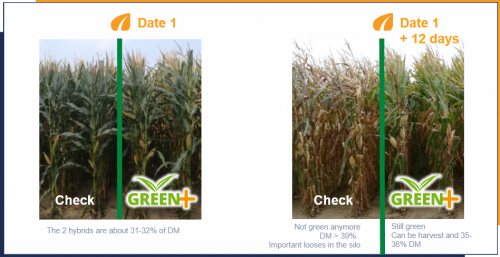
Challenge 2: Keep the yield and quality of maize silage in the silo
WHAT WAS OBSERVED DURING THE SILO DIAGNOSTICS?
- The temperature of the forage at the attack front is a first indicator of its aerobic stability and its quality of conservation.
- The heating of the silo is the direct consequence of too much air inside the silo. The presence of air reactivates aerobic fermentation (yeast, molds), which produces heat. This rise in temperature indicates loss of forage in quantity and quality.
- A good compaction of the silo enables to expel s a maximum of oxygen, for a fast start of fermentation and a better conservation.
- The silo diagnoses done by MAS Seeds teams in 2017 and 2018 show that 49% of the silos have a heating point.
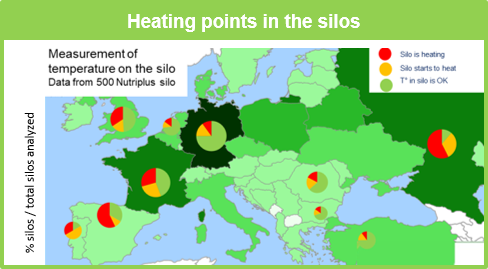
Source: MAS Seeds. Average of 510 silo diagnosis made on farm by MAS Seeds teams in 2017 and 2018
HOW DO VARIETIES GREEN + MEET THIS ISSUE?
- GREEN+ hybrids have a high level of soluble sugars that feed lactofermental bacteria at beginning. On the other hand, the green parts consume oxygen more quickly in the silo by breathing.
- GREEN+ hybrids allow a quicker start of fermentation and a faster pH drop after the closing of the silo.
- GREEN+ hybrids LIMIT SILO LOSSES AND ENHANCE SILAGE PRESERVATION.
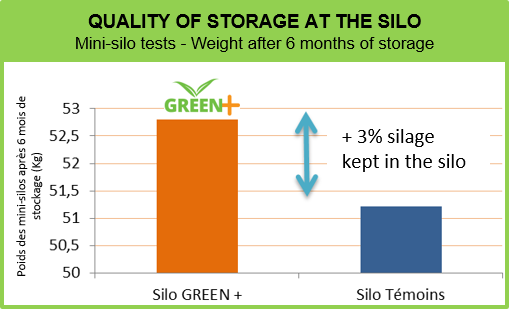
Challenge 3: Maximise the use of starch in the rumen of the cow
WHAT WAS OBSERVED DURING THE SILO DIAGNOSTICS ?
- The degradability of starch contained in the forage is strongly linked to grain bursting.
- The starch contained in badly broken grains is not well used in the rumen of the cow, especially if the grains are vitreous at harvest.
- We also note that in the case of late harvests, the grains are more vitreous for most of the genetics. The vitreous starch, which is harder, is less degradable by rumen bacteria, and so less digestible.
- The diagnoses done by the MAS Seeds teams in 2017 and 2018 show that in 49,7% of the silos the grains are not sufficiently broken up.
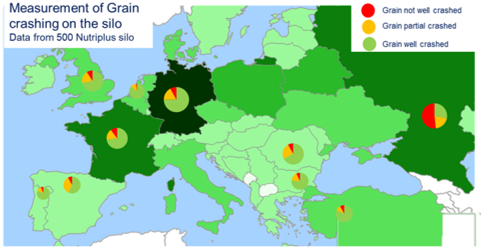
Source: MAS Seeds. Average of 510 silo diagnosis made on farm by MAS Seeds teams in 2017 and 2018
HOW DO GREEN+ VARIETIES RESPOND TO THIS CHALLENGE?
- The starch contained in the grains of GREEN+ varieties has a slower evolution between 30 and 35% of dry matter.
- The grains are less vitreous at harvest and easier to crack. The starch is quickly degradable in the silo.
- STARCH OF GREEN+ VARIETIES IS EASIER TO CRACK AT HARVEST AND SO IT IS MORE DEGRADABLE FOR A BETTER USE IN THE RUMEN.
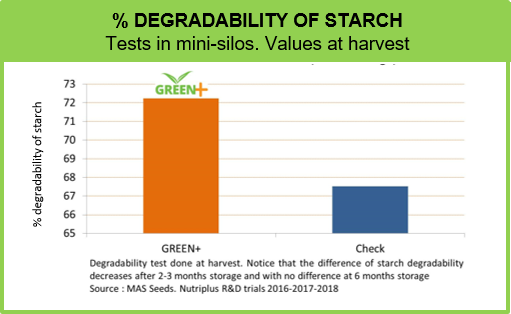
The performance and the profitability of dairy farms necessarily depends on a good quality of the fodder, and this whatever the climate conditions of the year. That's why MAS Seeds has developed for the last 15 years a genetic with a better tolerance to dry and warm conditions during summer as well as professional services to support dairy farmers throughout the production and preservation of silage maize.
WHICH HYBRIDS CARRY THE GREEN+ LOGO?
A portfolio of currently 17 varieties of silage maize ranked from very early to very late maturity are labelled GREEN+ by a specifically developed maize silage research program.
VERY EARLY
- MAS 08.F
- MADONIAS
- MAS 10.A
- MAS 16.B
- MAS 12.H
- SEMATIC
EARLY / MID EARLY
- MASTODON
- MAS 28.A
- MAS 20.S
- MAS 26.R
- MAS 20.A
- MAS 37.V
MID LATE / VERY LATE
- FREEMAN
- MAS 49.P
- MAS 54.H
- DM5507
- SHANIYA
- MAS 78.T
To know more about our varieties please select a country.

